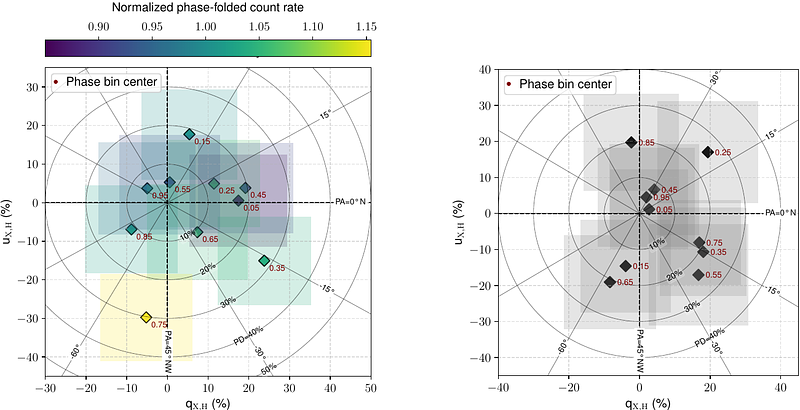Polarized multiwavelength emission from pulsar wind - accretion disk interaction in a transitional millisecond pulsar

Polarized multiwavelength emission from pulsar wind - accretion disk interaction in a transitional millisecond pulsar
M. C. Baglio, F. Coti Zelati, A. Di Marco, F. La Monaca, A. Papitto, A. K. Hughes, S. Campana, D. M. Russell, D. F. Torres, F. Carotenuto, S. Covino, D. de Martino, S. Giarratana, S. E. Motta, K. Alabarta, P. D'Avanzo, G. Illiano, M. M. Messa, A. Miraval Zanon, N. Rea
AbstractTransitional millisecond pulsars (tMSPs) bridge the evolutionary gap between accreting neutron stars in low-mass X-ray binaries and millisecond radio pulsars. These systems exhibit a unique subluminous X-ray state characterized by the presence of an accretion disk and rapid switches between high and low X-ray emission modes. The high mode features coherent millisecond pulsations spanning from the X-ray to the optical band. We present multiwavelength polarimetric observations of the tMSP PSR J1023+0038 aimed at conclusively identifying the physical mechanism powering its emission in the subluminous X-ray state. During the high mode, we detect polarized emission in the 2-6 keV energy range, with a polarization degree of 12% +/- 3% and a polarization angle of -2deg +/- 9deg (1sigma) measured counterclockwise from the North celestial pole towards East. At optical wavelengths, we find a polarization degree of 1.41% +/- 0.04% and a polarization angle aligned with that in the soft X-rays, suggesting a common physical mechanism operating across these bands. Remarkably, the polarized flux spectrum matches the pulsed emission spectrum from optical to X-rays. The polarization properties differ markedly from those observed in other accreting neutron stars and isolated rotation-powered pulsars and are also inconsistent with an origin in a compact jet. Our results provide direct evidence that the polarized and pulsed emissions both originate from synchrotron radiation at the shock formed where the pulsar wind interacts with the inner regions of the accretion disk.